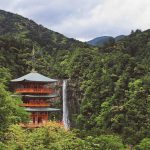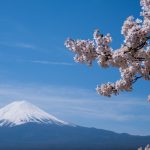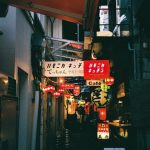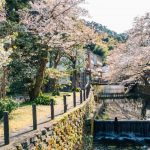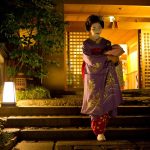Japan is very big on spirituality. It is widely accepted among the people, mixing Shinto and Buddhist customs, beliefs and traditions. The Shichifukujin, translated to the Seven Lucky Gods of Japan, is one that everyone in the country knows of. People would pray in temples and shrines to be granted blessings by this specific group of gods.
What are they, who are they, and what are the types of special pilgrimages for the Shichifukujin? Read on to find out!
What are Japan’s Seven Lucky Gods?

Known as “shichifukujin”, the Seven Lucky Gods of Japan are a group of deities deriving from not only Japan but also India and China, originating from the religions of Shinto, Buddhism and Hinduism. The seven gods are: Jurojin, Ebisu, Hotei, Benzaiten, Bishamonten, Daikokuten and Fukurokuju.

Ebisu is the only one that is native to Japan and Japan’s indigenous Shinto tradition. Three of them, Daikokuten, Bishamonten and Benzaiten, derived from the Hindu-Buddhist pantheon of India. The final three, Hotei, Jurojin and Fukurokuju, come from the Chinese Taoist-Buddhist traditions.
All of the seven deities existed independently before Japan’s “creation” of the group in the 17th century. According to legend, they travel on a ship named Takarabune, filled with treasures and bringing fortune and prosperity to everyone. It is said that if you leave a picture of the seven gods under your pillow on the last night of the year, you will be granted luck and fortune for the entirety of the following year.

The Shichifukujin is a great example of the way these various religions’ beliefs can live side by side in Japan, influencing and adapting one another’s customs and even gods. Each deity symbolises something different — let’s take a look at what they are.
1. Jurojin

Jurojin is a god of the Chinese Taoist-Buddhist traditions. He is an incarnation of a pole star, and he is the god of longevity and good health. Oftentimes he is pictured with a long white beard with a peach in his hand — a unique image of this deity.
2. Ebisu

The only god that is native to Japan and the country’s indigenous Shinto tradition, Ebisu is the god of prosperity, commerce and fishing. Bringing luck on a big catch often turns into a prayer for business prosperity. According to legend, it is said that he is the child of Izanagi and Izanami in Japanese mythology, deities of creation and death. Ebisu is pictured holding a red sea break in one arm and a fishing rod in the other.
3. Hotei

Hotei is said to be modelled after a Chinese monk, and he is the god of happiness and good fortune. He comes from the Chinese Taoist-Buddhist traditions, often depicted with a round belly, a big smile and a large sack. This sack is said to be the sack of patience and represents how much he can bear.
4. Benzaiten

Benzaiten is the only goddess of the seven gods. She is the goddess of beauty and arts, and comes from the Hindu-Buddhist pantheon of India. She is often depicted as a heavenly nymph — it is said that she was originally modelled after the Hindu goddess from Indian mythology — while holding a biwa, which is a traditional musical instrument. Oftentimes, she is shrined at a shrine near water.
5. Bishamonten

Bishamonten has the appearance of a warrior, as he is the god of war who defends humans against evil spirits. He derives from the Hindu religion. This god is also known as Tamon-ten and is one of the most important of the Four Heavenly Kings. Bishamonten is gifted with an extremely developed sense of hearing, and is often pictured with armor on, holding a spear and carrying a miniature pagoda.
6. Daikokuten

Originally a Hindu god, Daikokuten is the god of agriculture, prosperity and commerce. He derives from the Hindu-Buddhist pantheon of India and is an incarnation of Shiva, the deity of creation and destruction.
In Japan, he is pictured with a kind face holding a mallet in hand to bring fortune and a large sack filled with happiness. On top of that, he is often pictured sitting on a bag of rice, making him known as a god of good harvest.
7. Fukurokuju

Last but not least, Fukurokuju is the god of wisdom, good fortune and longevity. His name means having happiness, high status and longevity. Similar to Jurojin, this god is also an incarnation of the pole star and a deity of Chinese Buddhism. He appears with a long face and a long white beard, similar to Jurojin as well. The difference is that Fukurokuju holds a scroll and stick in his hands.
Japan’s Seven Lucky Gods Pilgrimage

The Seven Lucky Gods pilgrimage is known as Shichifukujin-Meguri in Japanese. The pilgrimage can take up anything from a couple of hours to half a day, depending on how far the places of worship are from each other. This is a short tour that can be done by visiting temples and shrines — with each of the stops either worshiping one or two of the gods so that collectively, visitors have worshiped all seven — and collecting stamps from the stops.
These stamps are called “goshuin” or “shuin”. It is said that collecting seven stamps bring in good fortune and blessings throughout the year, making it a popular New Year’s tradition for the locals. Participating shrines and temples would issue a special board called Shikishi for the stamps on the first week of the new year.

There are many of these pilgrimages all over Japan. The Miyako Seven Lucky Gods pilgrimage in Kyoto is said to be the oldest one, dating back to the Muromachi Period (1336-1573). This specific pilgrimage takes almost a whole day as the places of worship are not that close to each other.
In Tokyo, there are a few famous pilgrimages including Yamanote Shichifukujin Meguri in Meguro, dating back to the 18th century. There are six temples and two shrine stops on this pilgrimage and takes only a total of 2 or 3 hours. Another popular pilgrimage is the Koedo Kawagoe Shichifukujin Meguri in Saitama. Doubling up as a fun day trip to the Saitama Prefecture and visiting the “little Edo” area known as Kawagoe, this route is only 6 kilometres long.
—
The Seven Lucky Gods of Japan is a very interesting part of Japanese culture. Not only are you learning and experiencing the historical aspects of the culture, but you are also going about seeing the sights of some of the oldest temples and shrines in the country. The pilgrimage is definitely one to put on your list of activities when you travel to Japan.
For more articles about Japanese traditional culture, feel free to read our posts about lucky charms in Japan and the most popular festivals in Japan.





